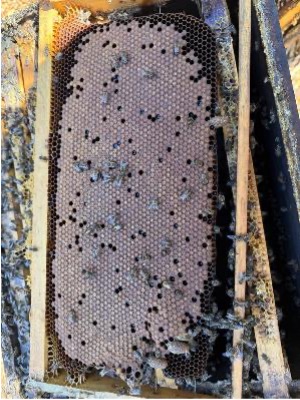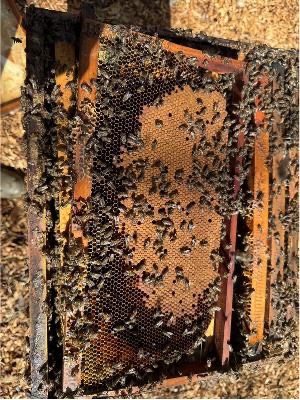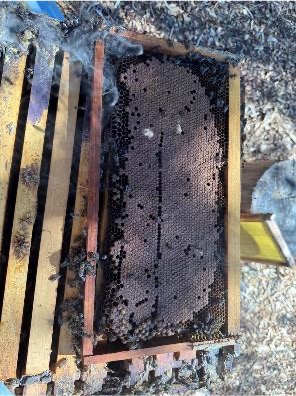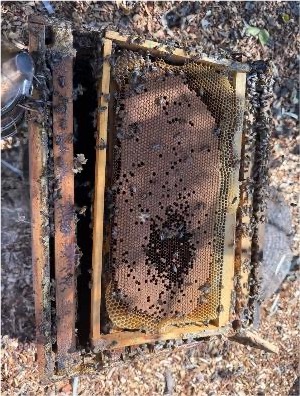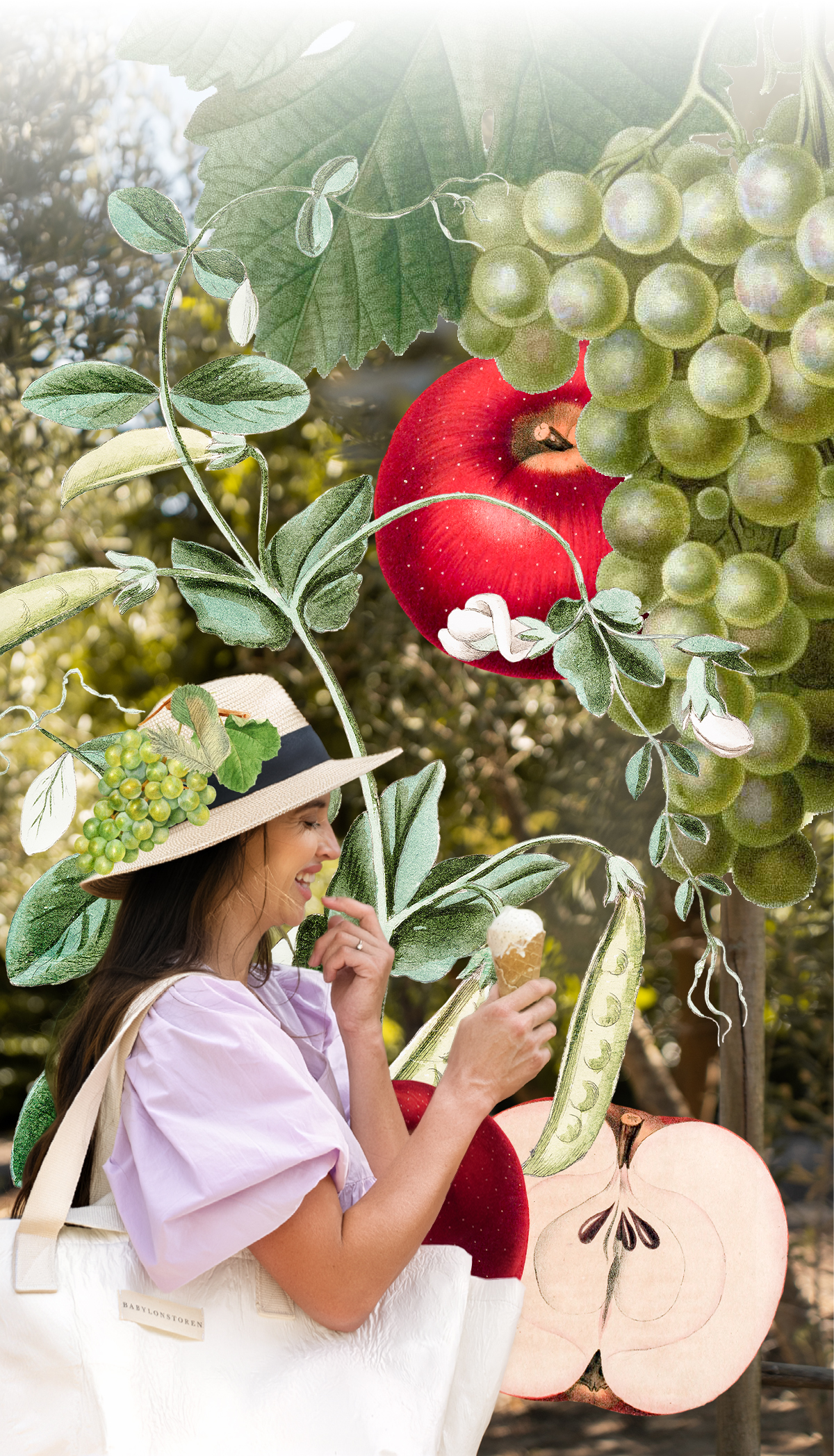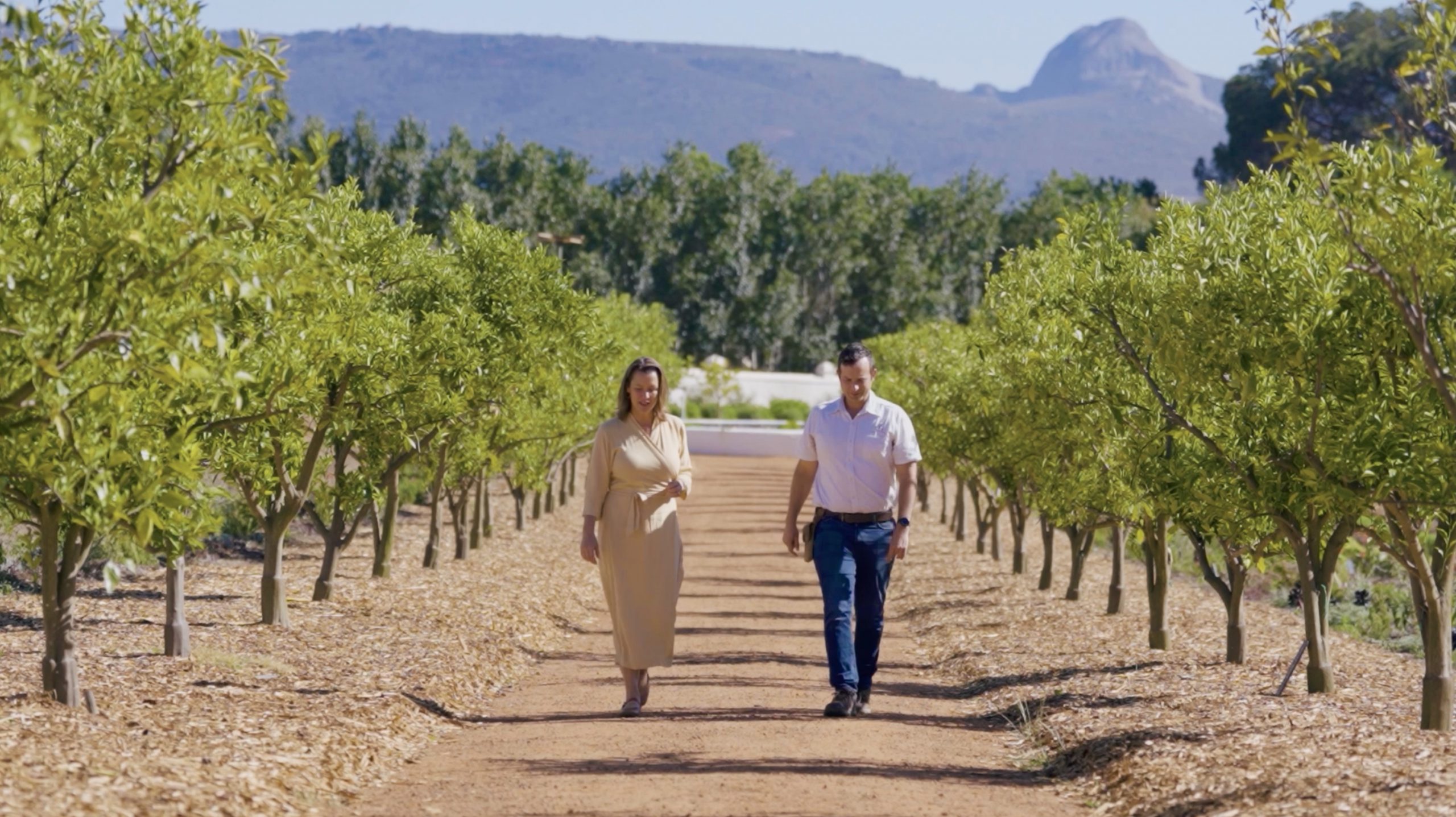Buzzing News Vol. 9
September 5th, 2025A week in the life of Babylonstoren’s VIP garden workers, by our resident beekeeper and entomologist, Arné Stander.
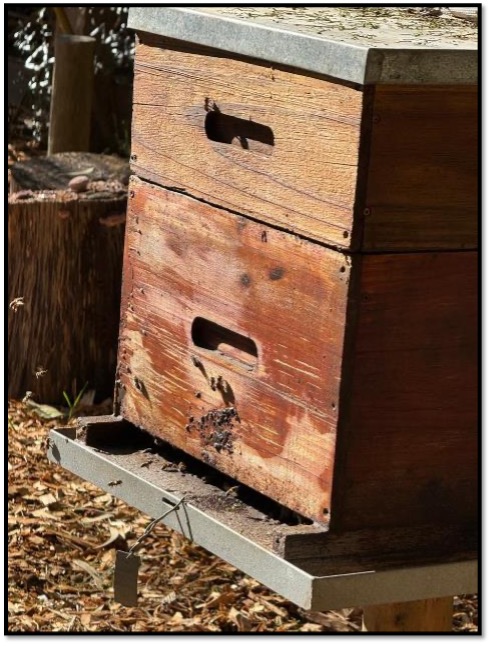
Overview
After weeks of rain, spring has arrived. The bees agree – almonds, plums, peaches and nectarines are in flower across the farm and garden, joined by new spring blossoms offering abundant forage.
This past week brought the best sunshine and warmer daytime temperatures of the season. I used the window to carry out brood renewal across all hives. The warmth made it possible to open each hive and carefully inspect every brood frame – a slow but essential process. The reward was clear: hives are filling with brood after the lean winter months.
With populations growing, it was time to replace brood frames, particularly in colonies older than three years.
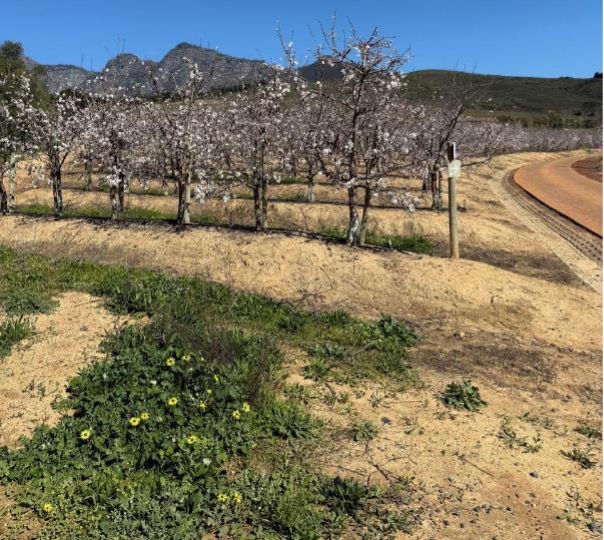
Why brood frame renewal is important
- Disease management
• South Africa has fewer brood diseases than Europe or the US, but European foulbrood (EFB) and chalkbrood occur.
• Old comb harbours pathogens, increasing long-term disease pressure. - Wax moth pressure
• The Greater wax moth (Galleria mellonella) thrives in South Africa’s warm climate.
• Old, dark comb attracts infestations. - Pesticide exposure
• Local bees – Apis mellifera capensis and Apis mellifera scutellata – often forage in areas with heavy pesticide use.
• Wax absorbs these residues, which can weaken colonies and queens. Renewal keeps wax clean. - Cell size and bee vitality
• Over time, cocoon layers thicken cell walls, producing smaller cells.
• Larger, stronger bees from fresh comb are essential in South Africa’s challenging climate.
When to replace frames
During inspections, I work through the entire brood box to select frames for replacement. The main triggers are:
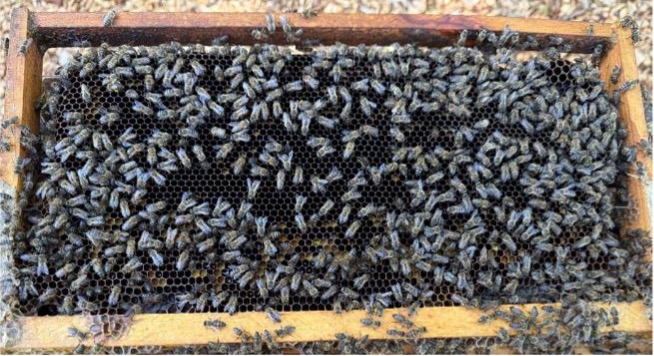
- Very old, dark comb
• Turns brown or black after years of brood cycles.
• Problems: smaller bees, higher pathogen load, residue build-up.
• Rule of thumb: replace any comb older than 3–5 years, rotating about one-third annually.
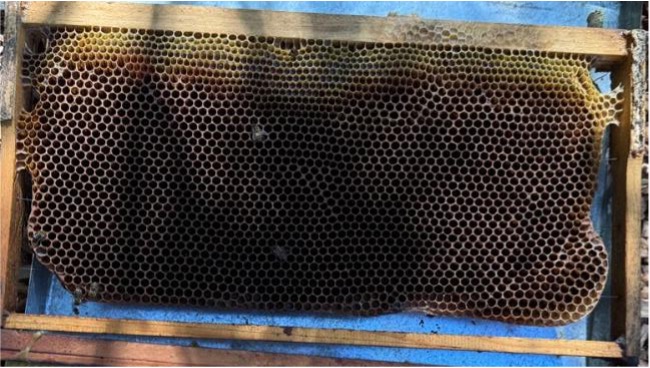
- Frames with excess drone cells
• Too many drones reduce worker brood.
• Varroa mites (if present) prefer drone brood.
• Replace frames with more than 20–30% drone comb, unless breeding drones deliberately.
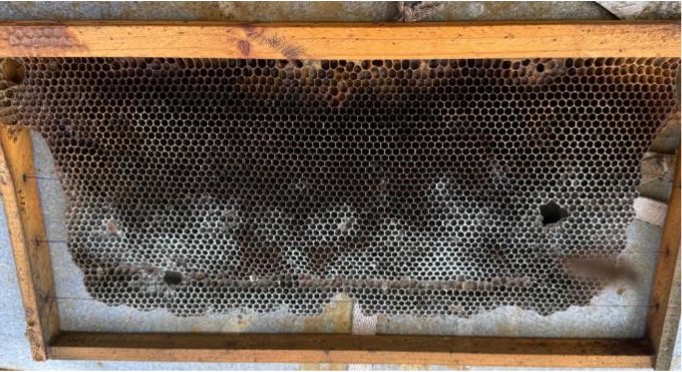
- Mould or mildew
• Caused by damp hives or poorly stored comb.
• Larvae may reject mouldy cells.
• Replace severely mouldy frames; light mould can sometimes be cleaned by strong colonies.
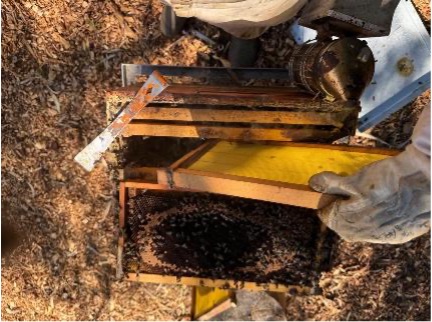
- Damaged or misshapen comb
• Bees may build uneven comb, leaving gaps, burr comb or cross-comb.
• This wastes space and makes inspections difficult.
• Replace any incomplete or misshapen comb.
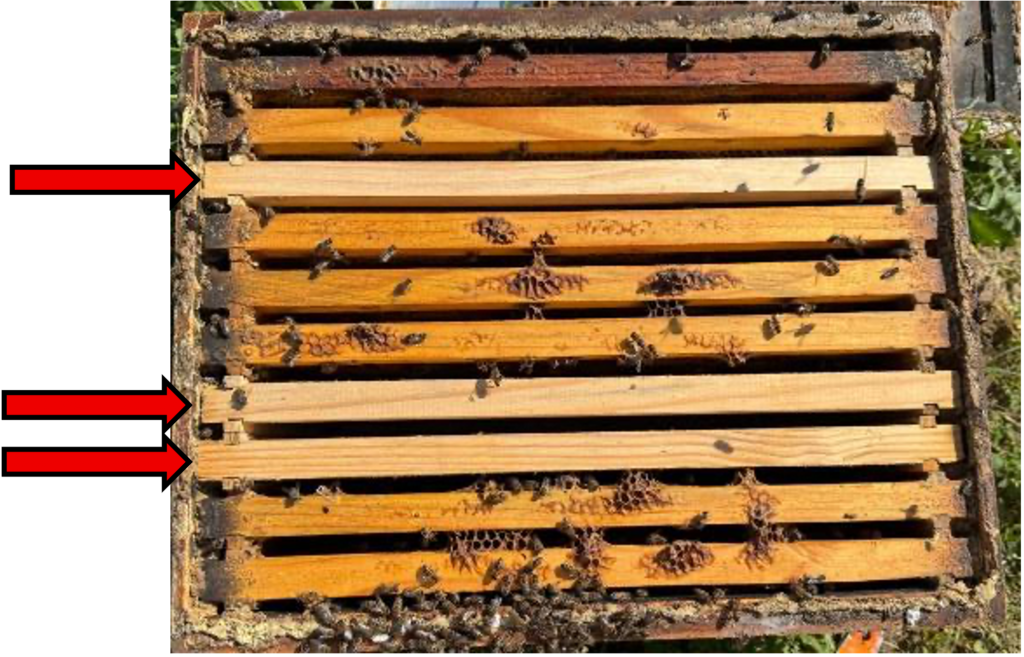
The aim is to replace between 2-3 frames with new foundation layered frames. As pictured above.
In the field
I visited the Overberg last weekend – the canola fields are in full bloom.

In weeks to come, I’ll add supers once the bees have built on the new foundation layered frames.
BUZZ WORDS
Super - Any hive body, usually a smaller box, used for the storage of honey which the beekeeper intends to harvest. Normally it is placed above the brood chamber(s). Supers are typically medium or shallow-sized boxes.
Apiary - Colonies, hives, and other equipment assembled in one location for beekeeping operations.
Beehive - An artificial cavity for a bee colony to live in, usually a box or boxes with movable frames.
Brood - Immature bees that are still inside their cells. Brood can be in the form of eggs, larvae, or pupae of different ages.
Capped honey – When bees cover their honey with wax, much like putting a lid on it.
Nuc – A nuc, or nucleus colony, is a small honeybee colony created from larger colonies, packages, or captured swarms.
Bee bread – Also known as bee pollen or ambrosia, is a ball or pellet of field-gathered flower pollen packed by worker honeybees and used as the primary food source for the hive. It consists of simple sugars, protein, minerals and vitamins, fatty acids, and a small percentage of other components.
Queen - A female bee with a fully developed reproductive system. Larger and longer than a worker bee.
